Nghe An is not only famous for its meaningful historical sites but also has many beautiful landscapes. From the blue sea, the majestic mountains to the mysterious caves, every tourist destination in Nghe An has its own beauty, promising to bring visitors memorable experiences. Along 63stravel find out these destinations!
Good article on the same topic: Visit 15 historical monuments in Nghe An, which attracts tourists Traveling in Nghe An, what to buy as a gift?
22 beautiful and famous Nghe An tourist destinations should come
Discover Nghe An - the majestic convergence of nature, poetic blue sea and enchanting landscapes. Here are the famous and famous Nghe An tourist destinations that you should not miss!
Cua Hien Beach
Cua Hien beach, a small and peaceful corner of Nghe An, brings enchanting pristine beauty. Not only possessing clear blue water and fine sand, this place also stands out with unique rocky beaches, which are compared to the "fairy chessboard" in the ocean.
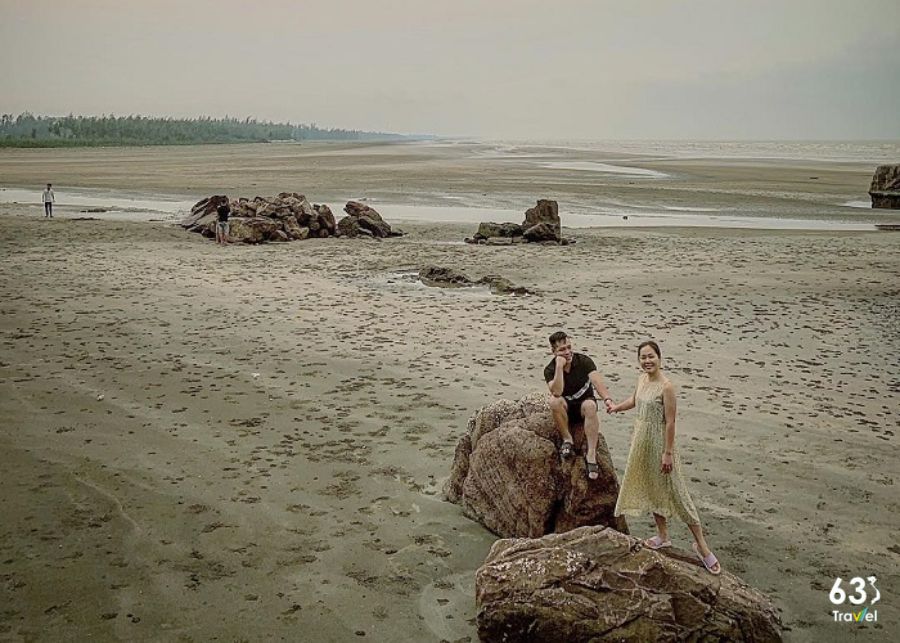
In the sun, the pebbles and shells are sparkling, creating a poetic scene. Coming to Hien Cua, you not only enjoy the relaxing space, but also be immersed in the simple rhythm of fishermen, listen to the waves and welcome the brilliant sunset in the vast sky.
Flower Valley Phu Quy
Flower valley of kneeling is like a brilliant natural picture in the heart of Nghe An, where the flower stretches on the soft hills. With an area of nearly 150 hectares, this valley is not only a paradise for the souls of love but also an ideal check-in for visitors.
Every season is beautiful, sometimes immersed in the dreamy purple color of the triangle, sometimes bewildered in front of the pristine daisies or pink pineapple. Walking in the middle of that romantic space, you will feel the full scent of nature and strange peaceful moments.
Pu Pu Xai Lai Len
Pu Xai Lai Leng - the roof of Truong Son Bac school, where it reaches the clouds with a height of 2,720m. The journey to this mountain peak is not only a challenge to conquer the height but also an opportunity to immerse yourself in the magnificent nature.
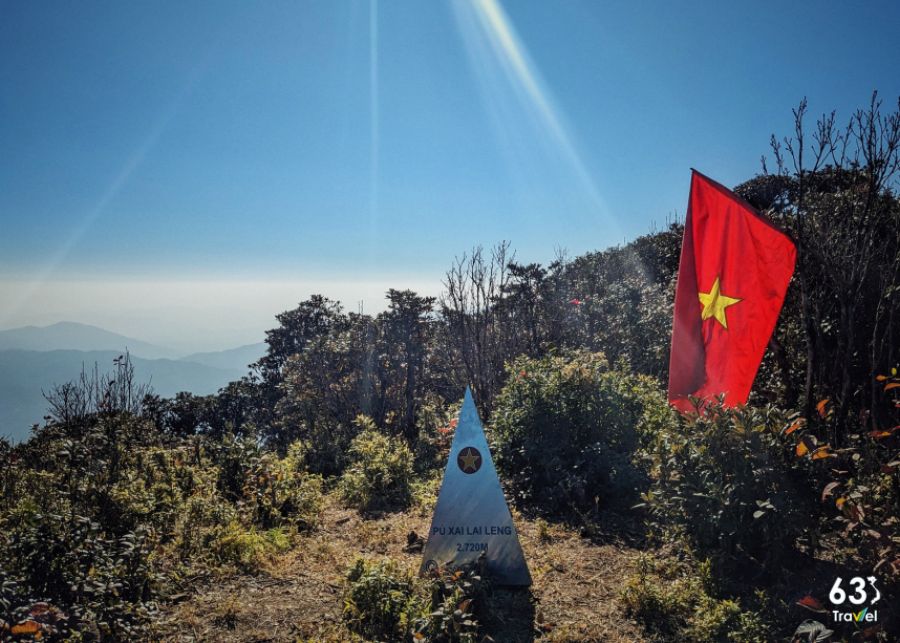
The mountains are hidden in the floating white clouds, the pristine old forest is covered with the path, all creating an enchanting natural picture. Coming here, visitors not only admire the scenery but also feel the majesty of heaven and earth and the rare wild beauty in the heart of Nghe An.
Flower fields of Duong Nghia Dan
Sunflower field at Farm 19/5, Nghia Dan district, Nghe An is one of the most beautiful check-in points in the Central, especially in the blooming seasons in 3-4 and November December. Stretching over 100 hectares, this is the largest sunflower field in Vietnam, creating a brilliant golden sea in the sun, making anyone fascinated.
Coming here, visitors not only enjoy the romantic scenery, take impressive photos but also can join the Sunflower Festival in December. In addition, you can also combine to visit the nearby dairy farm to have more interesting experiences!
Ho Chi Minh Square
Ho Chi Minh Square - the proud symbol of Nghe, is not only an impressive architectural work but also a convergence of deep cultural and historical values. With a total area of 11 hectares, the square is a large, green space, where people and visitors can relax, have fun and admire special items.
The most prominent is the solemn Uncle Ho's monument at the center of the radio ceremony, behind is the mountain simulation - reminiscent of his childhood homeland. In particular, at night, the square becomes more sparkling with art fountain combining sound and bright light. This is not only an attractive destination for tourists but also the pride of the people of Nghe An, the place where the love is for the great leader of the nation.
Mount Quyet
Quyet Mountain - Vien Ngoc Blue in the heart of Nghe, not only has the majestic natural beauty but also imprinted up the ups and downs of history. Located in Trung Do Ward, Vinh City, this mountain possesses a special terrain with four unique limbs: Phuong Duc, Long Thu, Quy Boi and Ky Lan, creating a charming painting.
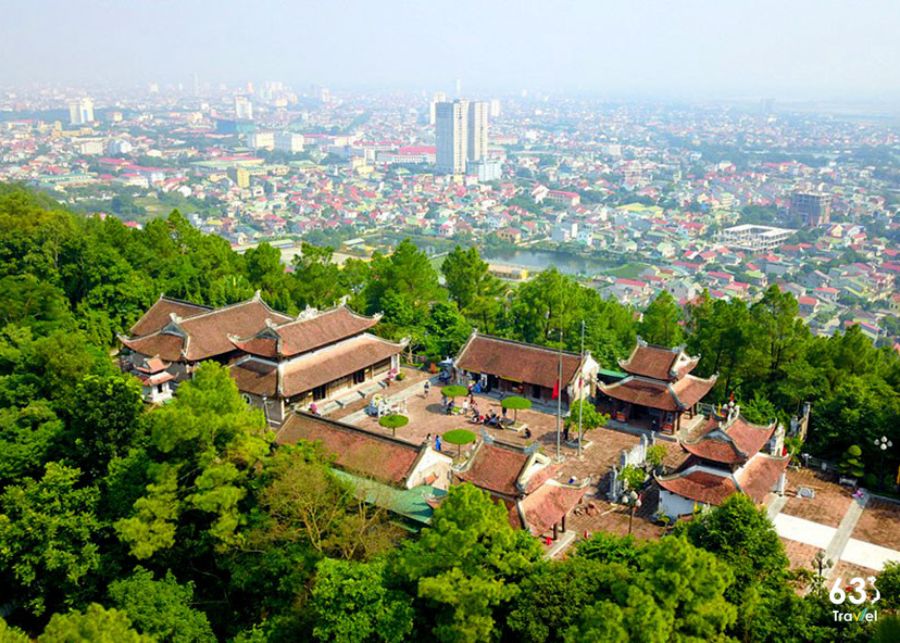
At the foot of the mountain, the gentle Lam river winding like a blue silk strip, reflecting the poetic scenery. Conquering the peak of the mountain, visitors will admire the panoramic view of Vinh city vibrant, eyes towards the deep blue Cua Lo beach or beyond the romantic Hong - Song Lam mountain. Not only that, this place also has a sacred Quang Trung temple with ancient architecture, and stone steps hidden under the green canopy, creating a space that is both majestic and poetic.
For those who love to explore, Quyet mountain is also a paradise to check-in with trails across the forest, clear lake nestled in the middle of the mountains, and the stone slopes are nostalgic. A journey coming here is not only an opportunity to enjoy nature, but also an opportunity to feel the historical breath, to find the old imprints of the traditional land.
Sea Sea
Nghe An not only has vibrant beaches but also owns many pristine and peaceful waters. One of the favorite tourist destinations in Nghe An is Dien Thanh Sea, about 40km from Vinh City. With turquoise water, fine yellow sand and gentle waves, this place brings a relaxing space, suitable for those who want to enjoy the natural beauty.
The most beautiful moment in Dien Thanh sea is the sunset, as the sun gradually hidden behind the horizon, dyeing the sea in the brilliant orange. Walking on the sand, feeling the cool breeze and the quiet scenery will be an unforgettable experience for visitors.
Rainfall
Thanh Chuong Rainfall - The natural masterpiece hidden in the middle of the jungle of Nghe, which gives visitors a wild, magnificent and challenging feeling. In order to conquer this waterfall, visitors must cross the cool streams, along the forest path, experience the journey that is both arduous and excited.
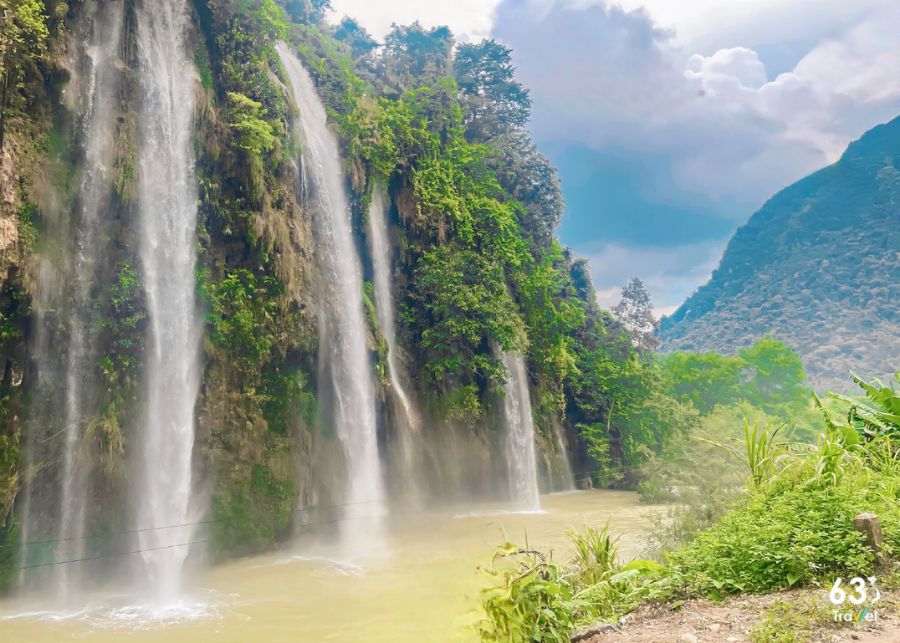
With an altitude of about 80m, the rainfall poured down each layer of mossy rocks, creating white strips like fanciful mist. The sound of waterfall flows with the sound of forest birds to create a vivid natural harmony. After the journey to conquer, nothing is more wonderful to be immersed in the clear water, enjoy the cool air and let all sorrow gradually disappear with each small wave.
Muong Luong sky gate
Muong Luong sky gate, located in Ky Son district, is one of the tourist destinations in Nghe An attractive with pristine and fanciful beauty. This place is like "Sapa of Nghe An" with the sea of clouds floating, fog covered and cool air all year round.
Standing at an altitude of more than 1,500 meters, visitors can look at the green valley and the coincidental mountains of the majestic Truong Son mountain range. Thanks to the impact of the massive industry and tourism services, Muong Lang sky gate still retains its pristine beauty, an ideal destination for those who want to seek peace and relaxation in nature.
Vinwonders Cua Hoi
Vinwonders Cua Hoi is one of the most attractive tourist destinations in Nghe An, providing an international -class entertainment experience. This is the largest entertainment complex in the North Central Coast, owning the first and only cable car cable car in the region, along with a series of interesting activities on the mainland and the sea.
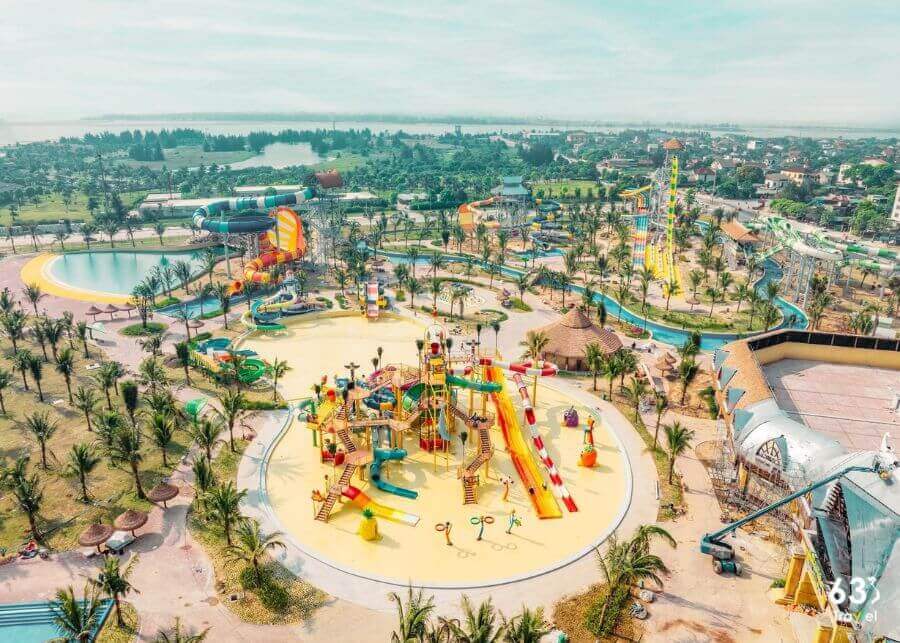
Here, visitors can freely explore the water park with the top slides, immerse themselves in the vibrant atmosphere of the animated festivals or enjoy the Lighting Party and the Music Music on the coast. Not only that, the journey at sea also takes you to Pisces pagoda 800 years old, unique cuisine experience on the sea and shopping at the impressive beach commercial street. With countless recreational activities, Vinwonders Cua Hoi promises to be an ideal destination for all tourists when coming to Nghe An.
Waterfall and
In the middle of the western mountains of Nghe An, the waterfall and appear as a natural masterpiece with the white water poured down from a height of 35m, like a soft silk band among the thousands. Not only is the ideal destination to relax and enjoy the fresh air, this place also opens the journey to explore the primeval forest and the typical cultural features of Thai and buttocks.
Coming to Xua Va waterfall, visitors can immerse themselves in the cool water, admire the majestic wild scenery or visit peaceful villages with traditional stilt houses. All create a natural picture and culture, which makes visitors unable to remove the attachment when leaving.
Bai Lu
About 25km from Vinh city, Bai Lu is a rare tourist destination in Nghe An to meet the beauty of the sea, mountains and forests. The clear sea water, the smooth sandy beach and the green casuarina rows create a romantic scene, separate from the hustle and bustle.
Coming here, visitors not only enjoy the fresh and relaxing space but also have the opportunity to store beautiful moments in nature. Regardless of any corner, you can easily record poetic images between the immense blue of the mountains and the sea.
Thanh Chuong Tea Island
Nghe An is not only famous for its beautiful beaches but also possesses many unique natural landscapes. One of the most attractive tourist destinations in Nghe An is Thanh Chuong Tea Island, located about 60km from Vinh City. With the "oasis" of green tea stretching in the middle of the quiet lake, this place is like "Ha Long on land", bringing a romantic and peaceful scenery.
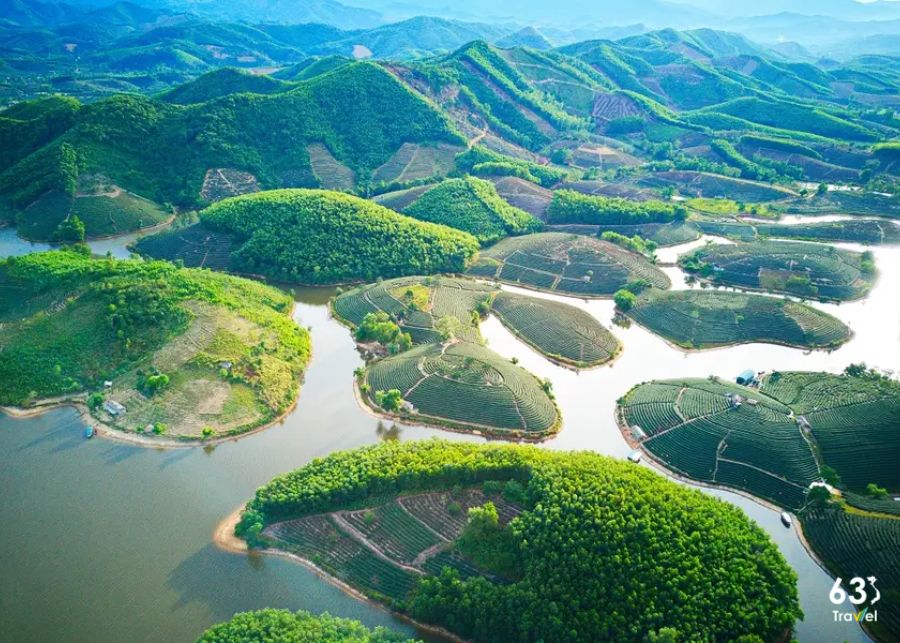
Coming here, visitors can drop themselves in the green space, check-in between beautiful tea hills or experience the motorboat creeping through the islands with a reasonable ticket price. In addition, the island's pubs also serve many local specialties, making the trip more complete.
Hon Ngu Island
About 4km from Cua Lo coast, Pisces island is a unique Nghe An tourist destination with two islands adjacent to each other, creating a wild and mysterious beauty. Large island 133m high, small island 88m high, drawing the picture of nature in harmony between the sky and the sea.
Coming here, visitors will admire the gravel beach that lasts thousands of meters with colorful smooth stones. Not only that, Tien beach with clear, cool water will bring you absolute relaxation, where you can unleash swimming and enjoy the pristine nature.
Pu Mat National Park
Located about 130km west of Vinh City, Pu Mat National Park is one of the most pristine and magnificent destinations in Nghe An. Belonging to the World Biosphere Reserve recognized by UNESCO, Pu Mat owns a variety of ecosystems with vast primeval forests, where many rare and precious animal and animal species are located.
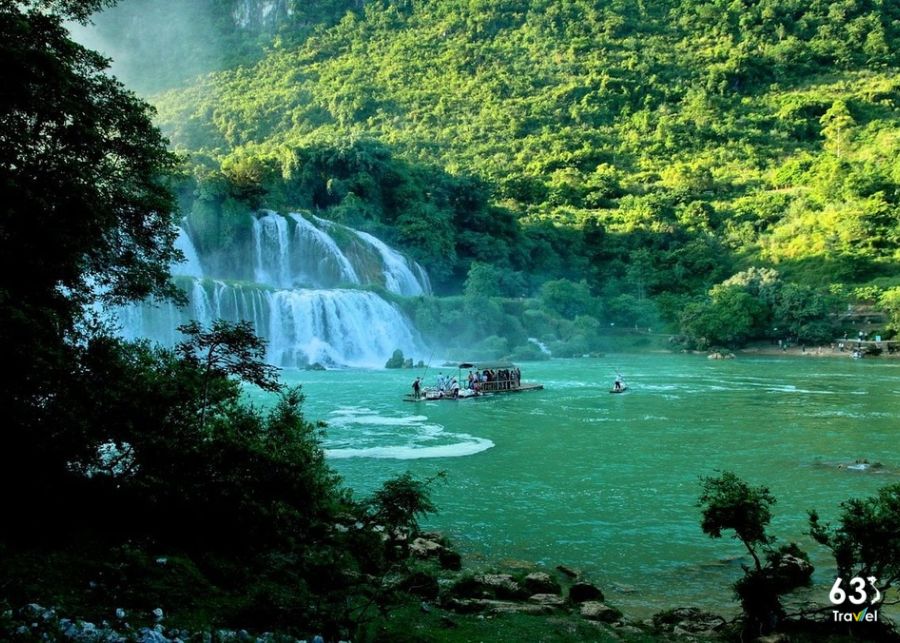
Visitors here can explore Khe Khe Waterfall with majestic, drop on the romantic John River or enjoy local specialties such as cool fish, lam rice. Besides, the journey trekking through the forest also brings a great experience, helping you enjoy the fresh air and wild beauty.
Khe Waterfall accompanied
Located deep in the core of Pu Mat National Park, Khe Waterfall comes down from a height of more than 500m, like a soft white silk band in the middle of the deep green forest. At the foot of the waterfall, the steam spreads cool, mixed with the green of the trees and the brilliant flowers, creating a wild but attractive nature picture.
Hoang Tru Village
Located about 2km from Kim Lien village, Hoang Tru village (Nam Dan district, Nghe An province) is a foreign hometown of President Ho Chi Minh, which preserves his childhood memories. The 3,500m² relic area consists of many works associated with Uncle Ho's life, such as the house of Hoang Duong - grandfather Uncle Ho, Hoang Xuan's church and a small house of the three -time parents.
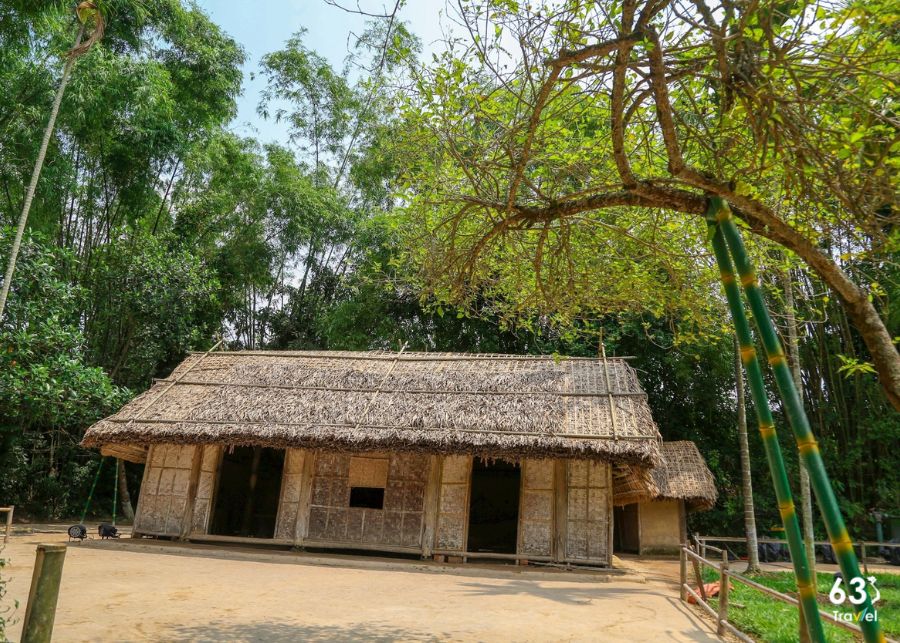
It was here, in 1890, the boy Nguyen Sinh Cung cried in the loving arms of the family. The childhood years in the peaceful village, under the dedicated teaching of his grandfather and his parents, nurtured in the resilient will, patriotism and the desire to liberate the nation. That simple small house has become a place for a great man - a hero of national liberation, world cultural celebrity.
Water slot
The water slot grows, also known as Thai bundle, is a magical stream with cool water in the summer and warm in the winter. Despite the changing weather, the water level here is still stable all year round. The stream is winding between mossy rocks and ancient forests, creating a pristine and peaceful scene.
Lotus village
Sen Village (Kim Lien) - the internal hometown of President Ho Chi Minh - is a tourist destination in Nghe An rich in historical and cultural significance. Visit here in May, you will admire the blooming lotus ponds, giving off the fragrance in a peaceful space.
The simple five -year -old house of Nguyen Sinh Sac, the father of Uncle Ho, is still preserved intact, bearing the rustic character of the ancient Vietnamese village. Besides, the village lotus pond - where he was a childhood, had fun - evoking beautiful memories of his childhood. If you have the opportunity to come to Nghe An, do not forget to visit the lotus village, the place where the countryside is deposited and the spirit of deep patriotism.
Cua Lo beach
About 16km from Vinh City, Cua Lo Beach features a fine white sand and clear blue water, becoming an ideal destination every summer. Not only is the place to immerse in the poetic nature, Cua Lo also brings interesting experiences such as cycling around trees, exploring green pine forests or simply keeping beautiful moments in the sea.
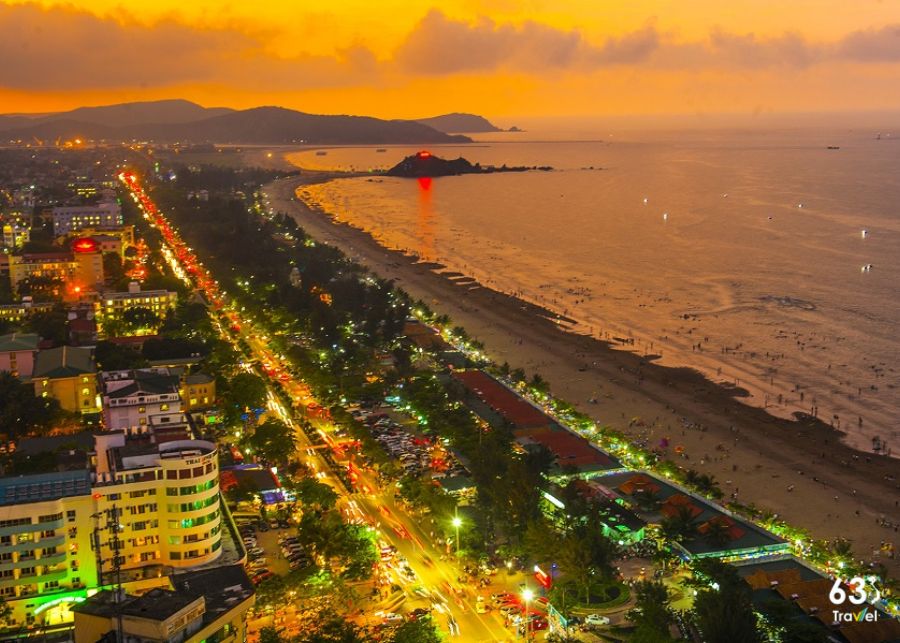
In addition to the familiar activities such as swimming, beach volleyball or golf, visitors can also try rowing baskets to the point of the night squid - a unique feature experience. If you love the luxurious space, you can relax at the infinity pool of the Summer Hotel or visit the pristine rocky beach on Lan Chau Island.
Tham Hang cave
Located in the middle of Quy Chau mountain, Tham Hom cave is a tourist destination in Nghe An with a wild, mysterious and historical beauty. The rough cliffs, strange shapes and shimmering stalactites create a fanciful space, attracting visitors at first sight.
Not only possessing impressive landscapes, Tham Hang cave is also an important archaeological site, where scientists have discovered many artifacts of stone, bronze, animal teeth, proving the traces of ancient Vietnamese residents from about 20,000 years ago.
Entering the cave, you will feel the cool air, listen to the sound of wild birds echoing in the majestic nature. The deeper the beauty of the large cliffs, the unique stalactites appear, as a natural masterpiece. If you have the opportunity to travel to Nghe An, do not forget to explore the Hang Tham, where the mysterious stories of prehistoric times.
Lan Chau Island
Located right next to Cua Lo coast, Lan Chau Island is like a giant toad to reach the sea, so the locals also call this place a Ru Ru island. The special feature of the island lies in the interesting opposition between the two sides: the east is the towering cliffs with a unique shape reaching out to the sea, while the West is connected to the mainland, forming a small peninsula.
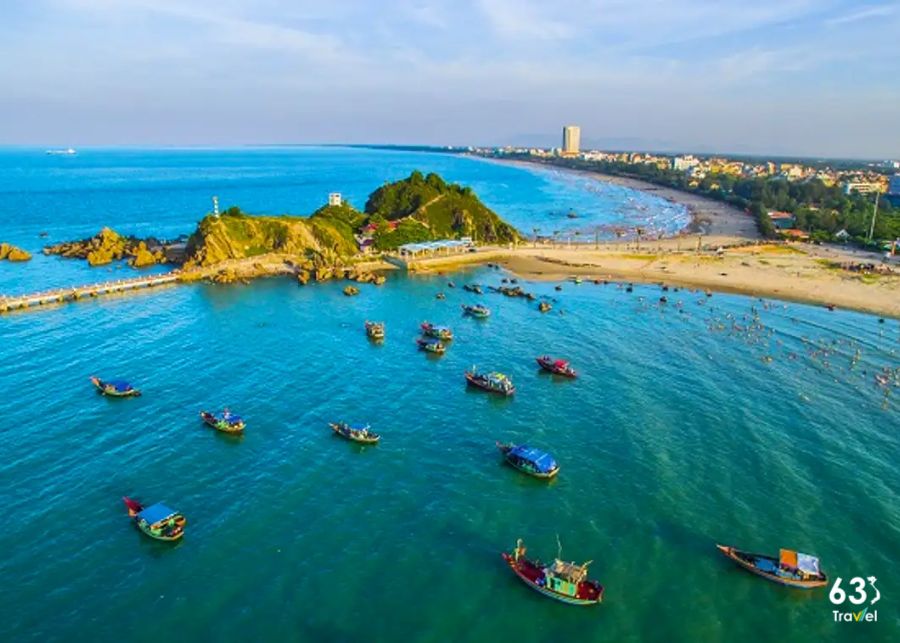
Coming here, visitors can drop their souls in each wave, admire the scene of the tide full of enchanting. In particular, Lan Chau Island also owns a prominent lighthouse in the blue sky, becoming the favorite check-in point of young people. If you have the opportunity to visit Cua Lo, don't forget to explore this beautiful island!
Above are the tourist destinations in Nghe An that you should not miss. Each place has its own beauty, from majestic nature to deep cultural values and history. If you have the opportunity to visit this land, take the time to explore to fully feel the beauty of Nghe An!
Nghe An 2344 view
Update day : 03/03/2025
Cua Lo Beach belongs to Cua Lo town, Nghe An province. This place is about 16km east of Vinh city, and 340km from Hanoi capital. In the past, Cua Xa - Lach Lo was known as a dangerous area with a strategic military position. Through ups and downs, Cua Lo beach was officially designated and became a prominent highlight in the tourism industry in the North Central Coast. Cua Lo has many small mountains and peninsulas, but also has flat plain terrain. Surrounded by the beautiful Cam River and Lam River, creating a beautiful landscape painting. Traveling to Cua Lo beach is the ideal choice for every family to relax and cool off on hot summer days. Beach travel is always more attractive on hot days, because now you can enjoy the refreshment of immersing yourself in cool water. The most ideal time to come to Cua Lo beach is from May to the end of October. Because this is the time when Cua Lo enjoys full sunshine, the weather is warm, suitable for outdoor activities. If you want your trip to be comfortable and not too crowded, avoid going on major holidays or weekends. But no matter what time you come, Cua Lo beach is still worth experiencing thanks to its wonderful beauty and many interesting activities. Cua Lo Beach is known as one of the most beautiful places in the North Central region. This place attracts many tourists not only because of its poetic natural scenery with blue sea, white sand, and golden sunshine. But also impressed by many unique folk cultural activities and eye-catching fireworks displays at the end of the tourist season (around the end of September). Coming to Cua Lo, you can enjoy the following delicious dishes. Crab sprouts: This dish not only awakens the sense of smell and taste of all diners but also contains high nutritional content. Crab sprouts are meticulously prepared from crab meat and many accompanying spices, guaranteed to be unforgettable once eaten. Steamed crab with tamarind: Although it is a popular seafood dish, steamed crab with tamarind in Cua Lo attracts everyone because of its unique flavor. The viscous tamarind juice fragrant with spices and the fried and then steamed crab create an attractive flavor, ready to please all diners. Clam porridge: Although it is a quite simple dish, to cook a delicious pot of porridge, it is necessary to go through many complicated steps. When eaten, clam porridge is mixed with herbs to stimulate the taste buds. Jumping squid: This is a specialty dish of Cua Lo because of the freshness of the squid when it has just been caught and processed right on the spot. Squid can be steamed, grilled... served with extremely attractive dipping sauce.
Nghe An
May to October
7640 lượt xem
Tham Om Cave is located at an altitude of 15m above sea level, the cave entrance is in the Northeast direction. This place is magnificent with fossils and mysteries that need to be discovered. Tham Om Cave is located in Quy Chau district, Nghe An province, about 7km from Road 48. This place is considered to contain many precious artifacts of ancient Vietnamese people, preserving a long-standing culture. Visiting Tham Om Cave is not only an opportunity to learn about history but also experience ancient culture. The cave is free and operates all day, so take the time to explore the interesting things at this location. In 1975, Tham Om Cave was discovered and excavated. Archaeologists have found many precious artifacts, from bronze, stone, to fossil animal bones and teeth, reflecting the life of ancient Vietnamese people. The Tham Om people are considered the first modern people in Vietnam. Transliterated in Thai, “Tham Om” means big cave. This place often attracts many tourists to visit every year. Tham Om Cave is considered a unique natural masterpiece of Nghe An. Take the time to come to this place to explore, experience and feel for yourself one day soon. When you arrive at Tham Om Cave, Quy Chau, Nghe An, you will immediately feel the wild and majestic beauty of mountain nature. The bustling sound of birds singing and the cool air will make your trip more attractive. Inside the cave is a special phenomenon of weathering due to water erosion on limestone mountains. With every step you take, you will encounter stalactites, large cliffs, along with diverse and unique shapes. All create the feeling of a special gift from the Creator. Coming to this cave, you will enjoy rustic culinary dishes such as banana flowers, yam fruit, green vegetables, bamboo shoots, wild bee pupae, and delicious grasshoppers. Don't forget to bring Nghe An specialty products as gifts for your loved ones after the trip.
Nghe An
From January to December
5815 lượt xem
Hoang Tru village is about 2km from Kim Lien village, in Kim Lien commune (Nam Dan district, Nghe An province), about 15km from Vinh city. There is a 3,500m2 Hoang Tru relic cluster here, including: The house of Mr. Hoang Duong - Uncle Ho's grandfather, the Hoang Xuan family branch church, the house of Mr. Nguyen Sinh Sac and Ms. Hoang Thi Loan - relatives giving birth to Uncle Ho. On the occasion of the Year of the Tiger in 1878, Mr. Hoang Duong, on his way to celebrate the New Year, met a little boy sitting on a buffalo's back, engrossed in reading a book. That boy's name is Nguyen Sinh Sac, he was orphaned when he was 4 years old. Feeling sorry for the situation and appreciating the virtue of studiousness, Mr. Hoang Duong asked the Nguyen Sinh family for permission to take Nguyen Sinh Sac home to raise and educate him. At that time, Nguyen Sinh Sac was 15 years old. Under the guidance of Mr. Hoang Duong, the more Nguyen Sinh Sac studied, the smarter he became, becoming famous throughout the region. When Nguyen Sinh Sac turned 18 years old, the couple chose him to be the son-in-law for their first daughter, Hoang Thi Loan. In 1883, the two got married and lived separately in a newly built small 3-room house. The house is the place to witness student Nguyen Sinh Sac diligently reading, witnessing the diligence and loyalty of his wife and the birth of his children. At the Huong exam in the year of Giap Ngo 1894, Mr. Nguyen Sinh Sac passed his bachelor's degree from Nghe An school. In 1895, he went to Hue capital to study and took his wife and children with him. After giving birth to her fourth child (in 1900), Ms. Hoang Thi Loan died in Hue at the age of 33 (February 1901). Mr. Nguyen Sinh Sac's father and son sadly left the imperial capital to return to Hoang Tru village to live. At the Tan Suu Faculty exam (1901), Mr. Nguyen Sinh Sac went to Hue to take the exam and passed the exam. King Thanh Thai gave him the plaque "An tu ninh gia" (Thanks to the king for his good family). According to tradition, Mr. Nguyen Sinh Sac and his children said goodbye to Hoang Tru village and returned to their paternal hometown - Kim Lien village to honor their ancestors. Hoang Tru relic area with a small three-room house is the place where President Ho Chi Minh was born, where the beautiful and difficult childhood years of him and his grandparents were attached. parents, brothers and sisters. It was also here that he received the love of his relatives and his homeland, and witnessed the devoted teaching of his grandfather and father. Those spiritual values are the source of a great aspiration for young Nguyen Sinh Cung to become the great President Ho Chi Minh, a Hero of national liberation, a cultural celebrity of Vietnam and of Vietnam. mankind.
Nghe An
From January to December
5235 lượt xem
One of the highlights of this beach is the long sandy coastline and gradually increasing depth, creating favorable conditions for swimming and relaxing on the clean sand beaches stretching along the coast. Cua Lo Nghe An Beach is also a gathering place for many entertainment and relaxation activities such as jet skiing, hot air balloon flying, walking along the beach, stargazing on the beach, squid fishing in basket boats at night and many other activities. This creates conditions for visitors to enjoy exciting moments of relaxation and entertainment at Cua Lo beach - Nghe An. Summer (from April to August) is the ideal time to visit Cua Lo Nghe An, especially for those who like swimming. At this time, the weather is dry and sunny, visitors can comfortably follow their schedules and capture wonderful moments. One of the new activities added to the tourism program at Cua Lo Nghe An beach is flying a hot air balloon to see the sea. For 200,000 VND per trip, visitors will be taken to a maximum height of 50m to see the beauty of Cua Lo beach. This activity takes place in the time frames from 6:30 a.m. - 9:30 a.m. and 4:30 p.m. - 6:30 p.m. Note that the activity only takes place during one event period, so visitors need to follow the schedule to arrange a reasonable time for their trip. Early morning is the ideal time to swim and watch the sunrise at Cua Lo beach, Nghe An. Fresh air and cool sea water will help visitors relax and enjoy wonderful beautiful moments. In addition, you can also participate in many other activities such as riding a jet ski, kayaking, walking along the beach, and taking photos on the beach.
Nghe An
March to November
5088 lượt xem
About 16km from Vinh City, Sen village (Kim Lien) in Kim Lien commune, Nam Dan district, Nghe An province is Uncle Ho's paternal hometown. This is one of the four most important monuments in the country and is also the pride of the people of Nghe An. You can go to Sen village at any time of the year, but the most suitable time is in May. This is the occasion when the lotus ponds bloom, radiating a fragrant scent, bringing a pleasant feeling. dispel the sultry and stuffy heat and harsh wind in the Central region. Moving to Nghe An is very simple, you can easily travel by different means. From Hanoi and Ho Chi Minh City there are direct flights to Vinh city. You can also travel by train to Vinh station or by bus and motorbike. From Vinh city, follow road 49 to kilometer 13, turn onto the red dirt road shaded with eucalyptus and rows of green casuarina trees to reach Sen village. At the beginning of the village there is a large lotus pond, passing through the lotus pond is Coc well. Here, as a child, Uncle Ho often went to fetch water, fish and have fun with friends in the village. Behind the shady green bamboo fence is the simple, simple, five-room thatched-roof house of the family of Deputy Bang Nguyen Sinh Sac, Uncle Ho's father. After passing the Vice Ranking in the exam in the year Tan Suu 1901, Mr. Nguyen Sinh Sac and his children left Chua village (Hoang Tru) to live in Sen village, his paternal hometown. This house was built by the people of Sen village using public funds to celebrate him passing Pho Bang, bringing honor to the whole village. In front of the house there are 2 small yards and a garden surrounded by a hibiscus fence. Next to the house is a horizontal house used as a kitchen. The two outer rooms are where the altar is placed and where guests are received. The third room is the residence of Mrs. Nguyen Thi Thanh - Uncle Ho's eldest sister. The remaining two rooms are the family's resting and living areas. The fifth room has only one counter and is also the resting place of Mr. Nguyen Sinh Khiem and Nguyen Sinh Cung (Uncle Ho). Even though he passed high scores, the items in the house are still very simple like many other rural houses: wooden counters, bamboo beds, clay jars for water, bamboo bowls, etc. Most of these items are made by donated by the villagers, these memorabilia are still kept today. Uncle Ho was attached to this house during his teenage years from late 1901 to mid-1906. The house witnessed Uncle Ho's learning and growth process; is the place where his first feelings of patriotism and his awareness of the times were marked. After 50 years away from his homeland, traveling to find a way to save the nation, making a revolution to free the country from French colonial rule, he returned to Sen village twice in 1957 and 1961. You can visit the houses that were close neighbors to Uncle Ho's family at that time such as the Co Dien smithy, the house of Mr. Vuong Thuc Quy, the house of the Confucian master, the house of Mr. Nguyen Sinh Nham - Uncle's grandfather,...
Nghe An
May to October
5232 lượt xem
Vinh City - the heart of Nghe An - a land with a history of hundreds of years, where King Quang Trung - Nguyen Hue chose to build the capital in 1788. From then on, it was also called Phuong. Hoang Trung Do. Thanh Vinh in the past belonged to Vinh Yen commune, Yen Truong district, Nghe An province. Now it is Cua Nam ward - Vinh city, Nghe An province. The citadel's old name is Nghe An Citadel, and in folk culture it is also known as Turtle Citadel (turtle citadel). The reason it is called the turtle citadel is because the citadel was built in a 6-sided shape. Standing on Quyet mountain, looking down, it looks like the shape of a turtle. The citadel was built in the Nguyen Dynasty, during the reign of King Gia Long. In 1802, the Nguyen dynasty seized power from the Tay Son dynasty. Although he hated Nguyen Hue - Quang Trung, Gia Long could not ignore the outstanding vision of the military genius Quang Trung - Nguyen Hue that: Quyet Mountain and Vinh River have the stature of an imperial capital. So why is it not worth building a provincial headquarters? That's why, in 1804, Gia Long started building the citadel. However, because he wanted to erase traces of the Tay Son dynasty, Gia Long did not build the citadel on Dung Quyet mountain but built it in area 2, Vinh Yen commune, Yen Truong district, where traces of the citadel still remain. until now. The citadel was built of earth. King Gia Long's court mobilized 1,000 Thanh Hoa soldiers and 4,000 Nghe An soldiers to build the citadel. During the reign of King Minh Mang, in 1831 the citadel was built of laterite on a larger and more solid scale. During Tu Duc's reign, when upgrading, he took 8,599 stone slabs from Dien Chau and laterite from Nam Dan, 4,848 pounds of lime, 155 pounds of molasses, with a total cost of 3,688 francs - a huge amount of money at that time. to build. So we can see that the scale of citadel construction and the position of the citadel are very important. The citadel was built with the strength of the people, even with the blood and tears of the people. The citadel has a hexagonal structure, with an area of about 420,000m2 and a circumference of 2,520m. includes 2 walls: inner wall and outer wall. Along with the high citadel system is a deep moat system. The trench was dug close to the edge of the citadel to get land to build the citadel and also served as a protection system, increasing the difficulty when the enemy attacked the citadel. The ditch system is also annually planted with lotus seeds to collect seeds to pay tribute to the court. The citadel has 3 entrances: Front gate, Left gate, Right gate. Cua Tien is the main door facing south with a sense of direction towards the capital Hue, and is the door for the king to sit in. The king was solemnly welcomed here, and the mandarins in the imperial ministry and the governor who came in and out were also welcomed here. The Left Gate opens to the east. In the middle above the gate arch are engraved two Chinese characters: "Left Gate". The gate's foundation is now covered because this road was paved in 1990. Huu Gate is opened to the west. The intermediate foundation also reveals polished blue stone slabs of many different sizes. Compared to the Front gate and the left gate, the body of Huu gong is still more intact. The gates are designed with domes. Standing in the middle of the city gate, we both feel like standing in the middle of a small solid house and also feel like standing in a solid blockhouse. It can be said that Nghe An citadel was designed as a military fortress, with high defensive capabilities. On the way to the city gates, across a deep moat, a bridge was built for travel. The bridge is built in a rolling arch style. The stone foundation is very solid. The bridge is 4.42 m wide, 2.5 m high, the bridge is 3.5 m wide, boats can easily pass under the bridge arch. During the Nguyen Dynasty, inside the citadel, the largest building was the palace. Along with that are agencies such as the governor's palace, the governor's palace, the military commander's palace, the governor's palace, the barracks and the prison. The entire citadel is equipped with 65 cannons, 47 of which are placed in guard posts, the rest are concentrated in the palace and the governor's palace. Thanh Vinh was born to create a political and military center, as well as a defense project of Nghe An province. In 1885, the French colonialists opened fire to invade our country. The feudal regime of the Nguyen dynasty resisted weakly, so Vinh citadel quickly fell into the hands of the French colonialists. Since then, Thanh Vinh has become a testament to a tragic but heroic period of the Nghe An people. This place witnessed the brave struggle of Uncle Ho's beloved sister - Mrs. Nguyen Thi Thanh. She organized the theft of guns from the barracks so that the insurgents would have enough weapons to attack the citadel, but when the matter was revealed, she was arrested and taken to Lao Vinh's house, where she was brutally tortured. The trial on June 4, 1918 sentenced her to 100 strokes and 9 years of hard labor. Next was the period of boiling spirit of the revolutionary climax of the 30th and 31st. Thanh Vinh became the place to witness extremely fierce struggles, witnessing the courageous spirit of sacrifice of the people of Nghe An to create a Soviet peak. By 1941, Vinh citadel again witnessed the sacrifice of the Palace Team and patriotic soldiers standing in the ranks of the French army. Through the process of history, the dust of time and the devastation of war have left the Citadel no longer intact. Only 3 city gates still retain their basic structures, still standing tall between the roads leading to the inner city. Vinh Ancient Citadel is an ancient vestige, a unique architectural work with enormous historical and cultural value. In 1998, Vinh Citadel was ranked as a National Monument by the Ministry of Culture and Information. Source: Nghe An Relics Management Board
Nghe An 6081 lượt xem
Emperor Quang Trung Temple is located on Dung Quyet Mountain - a place considered a green pearl that nature has bestowed on Nghe An and Vinh city. Dung Quyet Mountain has 4 branches: Long Thu (dragon head), Phuong Duc (Phoenix wings), Quy Boi (Turtle dune) and Ky Lan. The ancients called the terrain here the land of four spirits, because there are enough Dragon, Ly, and Quy Phuong. This is considered the position of the pharynx during the process of building and defending the country on the natural path through Vietnam. After consulting with La Son Phu Tu Nguyen Thiep, Nguyen Hue chose the Dung Quyet mountain area as a prime location, with bright meteorology and spacious terrain to locate the capital for long-term planning. On September 3, the year of Mau Than (October 1, 1788), Nguyen Hue Quang Trung issued an edict assigning Tran Thu Than and La Son's husband Nguyen Thiep to organize the construction of Phuong Hoang Trung Do in the land between Dung Quyet mountain and Dung Quyet mountain. Unicorn. Therefore, October 1, 1788 was chosen as the anniversary of the Phoenix Trung Do. To commemorate the great contributions of the cloth hero, preserving the close bond between Emperor Quang Trung and his fatherland Nghe An, on August 15, 2005, the People's Committee of Nghe An province commenced construction. Build a temple to worship Emperor Quang Trung. After more than 1,000 days of construction, the temple was inaugurated on May 7, 2008. The temple includes the following structures: The four-pillar ritual gate is designed in a two-story, eight-roof architecture. Next are the auxiliary works: Left vu and right vu houses where delegates are welcomed and exhibits of artifacts. The center of the entire temple architecture is the front hall consisting of 3 houses: lower hall, middle palace, upper palace, designed in the shape of a Tam gradually increasing. All three houses are made of ironwood, carved with motifs in the style of the Nguyen Dynasty. The Lower House has an altar arranged according to Vietnamese worship beliefs - First Buddha, later saints. The Central Palace consists of three worship spaces: In the middle of the Council altar - worshiping generals and mandarins of the Tay Son period; The left and right sides worship civil and martial mandarins of the Tay Son dynasty. The Upper Palace is the place to worship Emperor Quang Trung and his father - Mr. Ho Phi Phuc and his mother - Ms. Nguyen Thi Dong. Every year, the Upper Palace is opened on two major holidays: July 29 of the lunar calendar - the death anniversary of Emperor Quang Trung and January 5 - the anniversary of the Ngoc Hoi - Dong Da victory. Emperor Quang Trung Temple and Trung Do Phoenix relic were recognized as tourist destinations by Nghe An Provincial People's Committee on December 21, 2017. Source: Electronic information portal of Nghe An province tourism department
Nghe An 5949 lượt xem
Phan Boi Chau memorial relic site in Nam Dan includes two locations, about 1.5km apart: paternal hometown in hamlet 2, Xuan Hoa commune, Nam Dan district and maternal hometown in Nam Dan town, Nam Dan district, Nam Dan province. Nghe An. Phan Boi Chau's real name is Phan Van San, alias Sao Nam, born on December 26, 1867 in a Han family, in Sa Nam village, Nam Dan district, Nghe An province; He is a great cultural figure and representative of the Vietnamese national liberation movement in the early years of the twentieth century. In the dark night of slavery, on the journey to find a way to save the country with nearly thirty years of hard work, Phan Boi Chau's footsteps passed through many places: in Quang province, in Hoan Don, in Tuyen. Quang, Dong Kinh, Than Ho, Shanghai, Que Viet, sometimes in Japan, sometimes in China, sometimes back in Thailand... Patriotic movements launched by Mr. Phan such as Duy Tan Hoi, Dong Du, Vietnam Quang Phuc Association, Vietnam Nationalist Party... are always responded to by people from all walks of life. Especially the youth, they see Phan Boi Chau as an idol and ideal to strive for the cause of national liberation. On June 30, 1925, Phan Boi Chau was kidnapped by the French colonialists in Shanghai (China), brought back to the country, tried at the Hanoi Penitentiary Court, and then brought to rest in Hue. On the morning of October 29, 1940 (September 29, Canh Thin year), he breathed his last breath at the thatched house on Ben Ngu slope (Hue). The Phan Boi Chau memorial relic area in Nam Dan is a place associated with Phan Boi Chau's life from the time he cried into the world, until the time he left to find a way to save the country. Phan Boi Chau's house used to be a gathering place for "heroes from all directions" - patriotic literati, intellectuals, members of Can Vuong's party, guests from the continent who lost their lives... everywhere discussed together. water affairs. Among them is Deputy Nguyen Sinh Sac - President Ho Chi Minh's father. The days when he was a child, following his father to visit Uncle Phan, listening to his ancestors discuss the country's affairs, contributed to forming the ideology of saving the country and loving the people in Ho Chi Minh. During the years of working at home and abroad until he was arrested and sent to house arrest in Hue, Mr. Phan returned to visit his hometown and family several times. The last time he visited home was in the spring of the Year of the Tiger - 1926. Phan Boi Chau memorial relic area is a place to educate revolutionary traditions for the young generation, demonstrating the nation's morality of drinking water, remembering its source. The works are arranged harmoniously and have appropriate architecture, forming a unified whole that both serves the function of souvenirs and gratitude to famous people, and at the same time exudes elegance and grace like the essence of Mr. Phan. 1. Father's hometown: Uncle Phan's house in his father's hometown is located outside Ta Lam dike, looking far away is the majestic Dai Hue range, behind is the Lam river. To the northwest is the majestic Ru Dun, once the headquarters of the Mai Hac De in the past. Currently, the relic's campus is 754m2 wide, including items: gates, walls, memorial stele house, garden... 2. Maternal hometown: is the birthplace and associated with Phan Boi Chau's childhood, the total relic area is 4878m2, including 2 main areas: the memorial area including the cottage and the garden of his family. Phan Boi Chau; The memorial area includes a display of artifacts related to the life and revolutionary career of Uncle Phan and auxiliary works. Currently, at the site, there are still 134 documents and artifacts (51 antiques, 83 relics), including materials such as paper, wood, stone, bronze, bamboo, etc., which are sacred souvenirs. attached to the life and revolutionary activities of Phan Boi Chau. Every year, two solemn ceremonies take place at the relic, which are the anniversary of Phan Boi Chau's death on the 29th day of the 9th lunar month and the anniversary of the birth of Phan Boi Chau on the 26th day of the 12th lunar month, autumn. Attracting a large number of officials, local people, all levels and sectors to attend. In addition, on holidays, according to local traditions such as Lunar New Year, Thuong Nguyen, Trung Nguyen... and the lunar new year day every month, local people come to offer incense in large numbers to commemorate. With particularly outstanding value, the historical relic Phan Boi Chau Memorial Area in Nam Dan was ranked by the Prime Minister as a Special National Monument on December 22, 2016). Source: Department of Cultural Heritage
Nghe An 5935 lượt xem
Nghe Tinh Soviet Museum was established on January 15, 1960, located in the Nghe An Ancient Citadel area, at 10 Dao Tan Street, Cua Nam Ward, Vinh City. The Nghe Tinh Soviet Museum is located on the floor of Vinh prison, where previously, from 1929 to 1931, thousands of revolutionary soldiers participating in the movement against the French colonialists were imprisoned. Nghe Tinh Soviet Museum is a museum that specializes in displaying a typical historical event of the nation when our Party was first born, which was the Nghe Tinh Soviet climax of 1930 - 1931. This is also one of three The museum was established the earliest in the Vietnamese museum system. The museum is built on 2 floors, on a 2-hectare land area, the Xo Viet Nghe Tinh museum has both beautiful, ancient, modern architecture and bold national identity. This is a unique cultural work that preserves over 5,000 original artifacts and revolutionary documents of the people of Nghe An during the Soviet climax of 1930 - 1931. In the museum campus of more than 15,000 square meters, in addition to the permanent exhibition house, there are also two cultural and religious works, which are: "Memorial to patriotic and revolutionary soldiers imprisoned at Vinh prison." ” and “The Nghe Tinh Soviet Martyrs Memorial House 1930-1931”. The permanent exhibition hall includes 9 rooms introducing the entire process of the Nghe Tinh Soviet movement. In addition, the museum also has two thematic galleries: The life and career of leader Lenin; President Kay-Son Phom-Vi-Han and Vietnam - Laos friendship. Gallery number 1 is the stateroom Gallery No. 2 displays and decorates many artifacts related to the Dong Du movement of Mr. Phan Boi Chau and the Can Vuong Movement, which are two movements that created the premise for the Soviet Union - Nghe Tinh to take place. Gallery No. 3 records the establishment process and typical activities of Nghe An Provincial Party Committee. Gallery No. 4 has a replica of the Soviet-Nghe Tinh struggle and many valuable propaganda pictures. Galleries No. 5, No. 6, No. 7 include documentary paintings recording the developments, the process of fighting against enemy terrorism and the results of the Soviet - Nghe Tinh movement in different periods. together. Gallery No. 8 is a miniature model of Lao Vinh House - the place where people who worked in the Can Vuong movement, the Soviet - Nghe Tinh movement were imprisoned with many brutal torture tools. In addition, the stork has a miniature model of Vinh ancient citadel. Gallery No. 9 includes documents about the influence of the Nghe Tinh Soviet movement. After more than half a century of operation, the Nghe Tinh Xo Viet Museum has strived continuously and matured in all aspects, becoming an outstanding cultural institution in preserving and promoting Nghe Tinh's cultural heritage. . Nghe Tinh Soviet Museum was ranked as a national historical and cultural relic in 1997. Source: Compilation of electronic information portal of Nghe An province
Nghe An 5694 lượt xem
Qua Son Temple is located at the foot of Qua Mountain, now in Boi Son commune (Do Luong district, Nghe An province) more than 70km northwest of Vinh city. This large-scale, famous and sacred temple is nearly a thousand years old and is the place to worship Uy Minh Vuong Ly Nhat Quang - Tri Chau Nghe An. According to historical records, Ly Nhat Quang was the 8th son of King Ly Cong Uan (also known as King Ly Thai To). In 1039, Ly Nhat Quang was appointed by the king to oversee tax collection in Nghe An with the title "Uy Minh Crown Prince". In 1041, Ly Nhat Quang was appointed governor of Nghe An with the title "Uy Minh Marquis Ly Nhat Quang". This is an important milestone affirming the great role and influence of Ly Nhat Quang on the land of Nghe An. 3 years later, King Ly Thai Tong promoted Ly Nhat Quang from the title of "Marquis" to the title of "King" to Uy Minh Vuong Ly Nhat Quang and gave him the right to "Tiet Viet" (ie the right to represent the king, to be The king trusts and delegates the right to decide all political matters in Nghe An). During his 16 years as Tri Chau in Nghe An, Ly Nhat Quang demonstrated great economic talent. With the way of the King and pro-people, he was instrumental in consolidating and building Nghe An from a "borderland" and "phen dau" land into a strong town and fortress both in military, economic, and cultural not only for the Ly dynasty but also for later dynasties. During his reign here, he had many great victories in economics, politics, culture, society, security and defense such as: Establishing Ba Hoa camp, providing military food for King Thai Tong. Opened the South, built roads, dug canals, built dikes, opened 52 continents, 22 camps, 56 books, helped people stabilize their lives, borders were maintained, and neighboring countries admired them. In 1057, Uy Minh Vuong Ly Nhat Quang converted and became a saint at the foot of Qua mountain and the people of Nghe An established a temple called Qua Son temple. It is also recorded that after the conversion, Ly Nhat Quang became a saint and always blessed the court to defeat many invading enemies, so later dynasties, every time they sent troops to fight the enemy, they returned to Qua Son temple to light the fire. He prayed for his blessing and after winning the battle, he returned to the temple to burn incense and pay tribute. Therefore, people say, Ly Nhat Quang lived to fight the enemy, and died heroically fighting the enemy. Currently, his sacred tomb at Qua Son temple relics is always cared for, worshiped, and smoked by people. Qua Son Temple was built in the early 11th century, is listed as "international, national creation", then restored many times in the Later Le and Nguyen dynasties. By the early 20th century, the temple became a large-scale complex, consisting of seven buildings, one of the "four great achievements" of Nghe An. Qua Son Temple is an ancient, massive architectural work, a convergence of creative and new thinking: The frames of the temple's works were taken from places and brought back and rebuilt. The temple includes many items, typically: The public-shaped building includes the Upper Palace, Middle Palace and Lower Palace connected consecutively - worshiping Uy Minh Vuong Ly Nhat Quang, Ta Vu worshiping Dong Chinh Vuong, Huu Vu worshiping Duc Holy King, tomb of Uy Minh King Ly Nhat Quang, stele house, horse house and horse man... Through many events, ups and downs of history, due to time and war, Qua Son Temple today no longer retains its former scale and stature. In 1952, bombs caused serious damage to the temple. Only the ancient stone stele and his tomb remain in the temple. By 1996, implementing the policy of preserving, restoring and embellishing national historical and cultural relics, the temple was restored by the government and people. On February 12, 1999, Qua Son Temple was ranked a national "historical and cultural relic" by the Ministry of Culture and Information (now the Ministry of Culture, Sports and Tourism). In 2019, Qua Son Temple Festival was recognized as a National Intangible Cultural Heritage, a tourist destination of Nghe An province. Source: Electronic information portal of Do Luong district, Nghe An
Nghe An 5587 lượt xem
Block 2, Highway 7, Con Cuong District, Nghe An, Vietnam
Hiệp hội du lịch Nghe An
Chỉ từ : Liên hệ
212, Binh Minh, Cua Lo Town, Nghe An, Vietnam
Hiệp hội du lịch Nghe An
Chỉ từ : Liên hệ
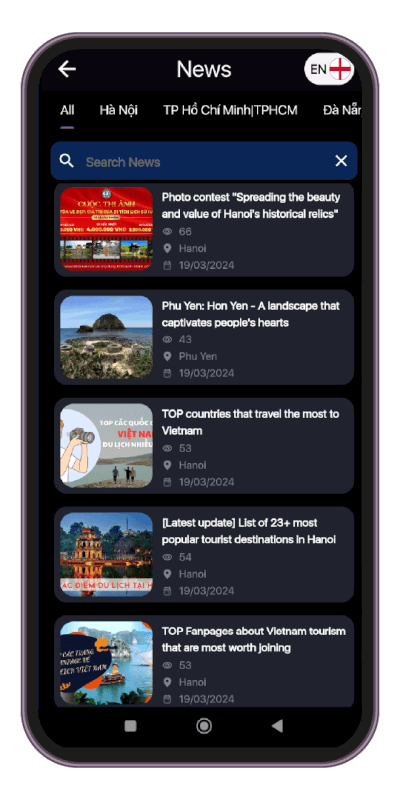

Download the Travelviet app to receive notifications about the latest travel news
